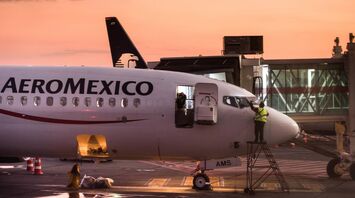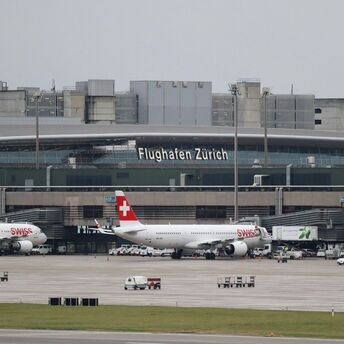Navigating the U.S.-Mexico Border: Key Airports Serving Cross-Border Travel

The U.S.-Mexico border is one of the most dynamic regions for travel and commerce, with millions of passengers crossing between the two countries every year. While major land border crossings like Tijuana and El Paso are well-known, several airports near the border serve as critical gateways, connecting travelers to destinations on both sides. These airports facilitate not only domestic flights but also international connections, allowing for smooth, efficient cross-border transit. For travelers, understanding the key airports along the border can make journeys between the United States and Mexico quicker and more convenient.
Tijuana International Airport (TIJ) and Cross Border Xpress (CBX)
One of the most unique and innovative solutions for cross-border travel is found at Tijuana International Airport, also known as General Abelardo L. Rodríguez International Airport. Located directly on the Mexico-U.S. border, this airport offers something that no other airport in the world does—a direct pedestrian bridge linking two countries.
The Cross Border Xpress (CBX) is a pedestrian terminal that connects passengers from San Diego, California, to Tijuana International Airport. This bridge, which opened in 2015, allows passengers to park or be dropped off in San Diego, check in, and then walk across the border via the bridge to catch their flights out of Tijuana. For U.S. passengers flying to destinations in Mexico or Latin America, this provides a seamless experience, bypassing congested border crossings and making international travel far more efficient. The CBX has become increasingly popular for travelers flying out of Tijuana’s airport, which offers numerous domestic and international flights, often at lower prices compared to U.S. airports.
Tijuana International itself serves over 10 million passengers annually and is a major hub for airlines such as Volaris and Aeroméxico. With its strategic location and the CBX facility, TIJ is a game-changer for cross-border travel, blending convenience with cost savings.
San Diego International Airport (SAN)
While Tijuana International offers the CBX for convenient access to Mexico, San Diego International Airport remains a major hub for flights between the U.S. and Mexico. Located just a few miles from the U.S.-Mexico border, SAN serves as a key airport for travelers flying to major Mexican cities like Mexico City, Guadalajara, and Cabo San Lucas.
San Diego’s airport, which is a major base for Southwest Airlines and Alaska Airlines, offers a wide variety of routes to Mexico, making it an essential option for both leisure travelers and those conducting business across the border. Additionally, the airport’s proximity to downtown San Diego and the border means that passengers can easily travel between the city, the airport, and Mexico with minimal hassle. SAN’s role in facilitating cross-border commerce and tourism cannot be understated, as it provides the primary link between Southern California and Mexico without the need for land border crossings.
El Paso International Airport (ELP)
Situated in West Texas, El Paso International Airport serves as a major gateway to Ciudad Juárez, Mexico, and the broader region. With its location just minutes from the U.S.-Mexico border, El Paso plays a crucial role in the region’s cross-border economy, offering domestic flights within the U.S. and connecting the two border cities.
Although El Paso International doesn’t operate direct international flights to Mexico, it serves as an essential airport for travelers who wish to cross into Ciudad Juárez via ground transportation after landing. The border crossing between El Paso and Ciudad Juárez is one of the busiest in the world, facilitating both personal and commercial travel. The airport itself is a base for Southwest Airlines and also offers services from American, Delta, and United Airlines, making it a central hub for those traveling to and from the U.S.-Mexico border.
Brownsville/South Padre Island International Airport (BRO)
Brownsville/South Padre Island International Airport is another critical facility on the U.S.-Mexico border. Located in southern Texas, it serves the border city of Brownsville, with easy access to Matamoros, Mexico. Though the airport is relatively small, it offers direct flights to several major U.S. cities, including Dallas and Houston, through carriers like American Airlines.
Brownsville is strategically positioned to serve travelers heading to or from Matamoros, a key industrial and commercial hub in northeastern Mexico. The proximity of the airport to the border makes it a convenient choice for both U.S. and Mexican passengers. Additionally, Brownsville is an attractive option for tourists heading to South Padre Island, a popular beach destination, further bolstering its importance for regional and cross-border travel.
Laredo International Airport (LRD)
Laredo International Airport in Texas plays a significant role in cross-border travel and trade, particularly for passengers traveling to the city of Nuevo Laredo in Mexico. Positioned directly on the U.S.-Mexico border, Laredo is one of the busiest land ports of entry, making the airport an important part of the region’s transportation network.
Though Laredo International is primarily a domestic airport, it serves as a critical hub for cargo and trade-related travel, given the region’s importance in U.S.-Mexico commerce. It offers regular flights to cities like Houston and Dallas, making it a key stopover for business travelers working along the border.
McAllen Miller International Airport (MFE)
Located in the Rio Grande Valley, McAllen Miller International Airport serves the city of McAllen, Texas, and the surrounding areas, including the border city of Reynosa, Mexico. McAllen’s proximity to Reynosa makes the airport an important hub for cross-border travelers, particularly for those traveling for business, given Reynosa’s status as a major manufacturing center.
The airport offers a range of domestic flights, primarily through airlines like American and United, connecting passengers to major U.S. cities. McAllen’s role as a commercial and economic center in the region ensures that its airport is a vital link for cross-border trade and travel between the U.S. and Mexico.




















